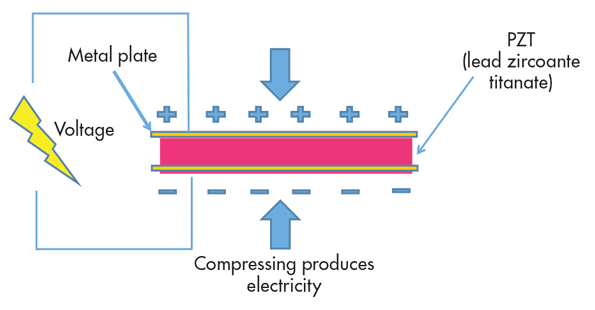There are many types of Electrical and Mechanical Sensors in the market. Still, all pressure sensor infer pressure by measuring a physical change within the sensor when exposed to pressure changes. This physical change can be resistance, capacitance, or frequency. Here would like to review all types of Pressure Sensors used with industrial pressure transmitters, explain of the sensor, hence advantages, and disadvantages. However, this is not a complete list but does cover 90% of the pressure transmitters currently on the market.
Capacitance Pressure Sensor
A capacitance pressure sensor is a large capacitor formed by one fixed plate and one movable plate linked to the mechanical output of a diaphragm (via fill fluid). Between the plates is a dielectric material. The sensor also has an oscillator circuit to energize the capacitor and a capacitance detector circuit.

When the capacitor is energized, changes in pressure at the process diaphragm are hydraulically transferred to the movable plate, causing the distance between the plates to change. This change in the distance changes the capacitance between the plates. The capacitance detector circuit senses the change in capacitance. The circuitry in the sensor is characterized to know that a Y change in capacitance equals an X change in pressure. The output signal from this type of sensor is small and analogue. The capacitance detector circuits must be carefully designed to weed out the effects of stray capacitance. As an analogue signal, an A/D the converter must be used to convert the analogue signal to digital to be used by the transmitters’ process circuitry.
Advantages
• Good low-pressure performance
• Good vacuum range performance
• Mature design (used for 50+ years)
Disadvantages
• Electronically complex
• Measures only one process variable
• Produces an analogue output signal (requires A/D converter)
• Low signal-to-noise ratio
• Does not handle overpressure events well
• Does not have a temperature sensor for temperature compensation (RTD must place externally of the sensor)
• It is a passive sensor
Piezoresistive Pressure Sensor
This sensor type uses Piezoresistive Effect to measure pressure. First discovered by Lord Kelvin in 1856, Piezoresistive Effect states that the resistance of a semiconductor changes as mechanical stress changes. Process pressure changes cause mechanical stress. During operation, changes in pressure at the process diaphragm are hydraulically transferred via fill fluid to the sensor diaphragm. The circuitry in the sensor is characterized to know that a Y change in resistance equals an X change in pressure.

Although different types of semiconductors can be used, single crystal silicon is the most widely used due to its excellent performance. These sensors use four piezoresistors that are connected to form a Wheatstone Bridge circuit to maximize the output of the sensor and to reduce sensitivity errors. The output signal from this type of sensor is analogue, so an A/D converter must be used to convert the signal to digital format to be used by the transmitters’ process circuitry.
Advantages
- Good response time
- Easy to manufacture
Disadvantages
- Negatively affected by high temperature
- Negatively affected by high static pressures
- Measures only one process variable
- Produces an analog output signal (requires A/D converter)
- Does not handle overpressure events well
- Low signal-to-noise ratio
- Does not have a temperature sensor for temperature compensation (RTD must be located outside the sensor)
- It is a passive sensor
Silicon Resonant Sensor
Silicon resonant sensors are fabricated from single crystal silicon using 3D semiconductor micromachining techniques. Two “H” shaped resonators are patterned on the sensor, each operating at a high-frequency output.
As pressure is applied, the bridges are simultaneously stressed, one in compression and one in tension. The resulting change in resonant frequency produces a high differential output (kHz) directly proportional to the applied pressure. A microprocessor manages this simple time-based function.
The microprocessor can receive the digital signal directly from the sensor without having to go through an A/D converter. Hence improves the overall accuracy of the transmitter since though small, there is a certain probability for error in each stage of conversion.
In a Differential Pressure application, the microprocessor can also use the two frequencies to determine the Static Pressure.
Therefore, this sensor can measure two different process attributes with a single sensor.
Advantages
• Very stable repeatable output (eliminating hysteresis)
• Highly accurate output
• Total digital signal
• Very low-temperature effect
• High signal-to-noise ratio
• Temperature sensor built into the sensor
• Predictable
• It is an active sensor
Disadvantages
• Relatively expensive to manufacture
• Cannot be used on the ‘hot’ side of nuclear power plants


